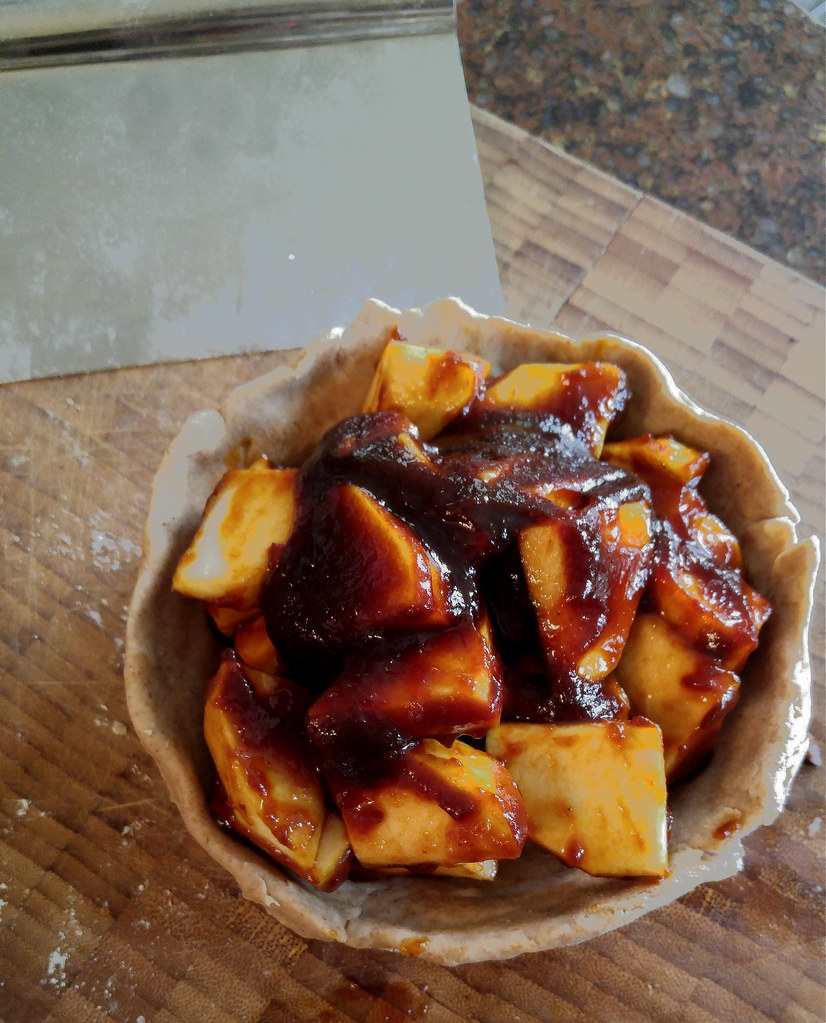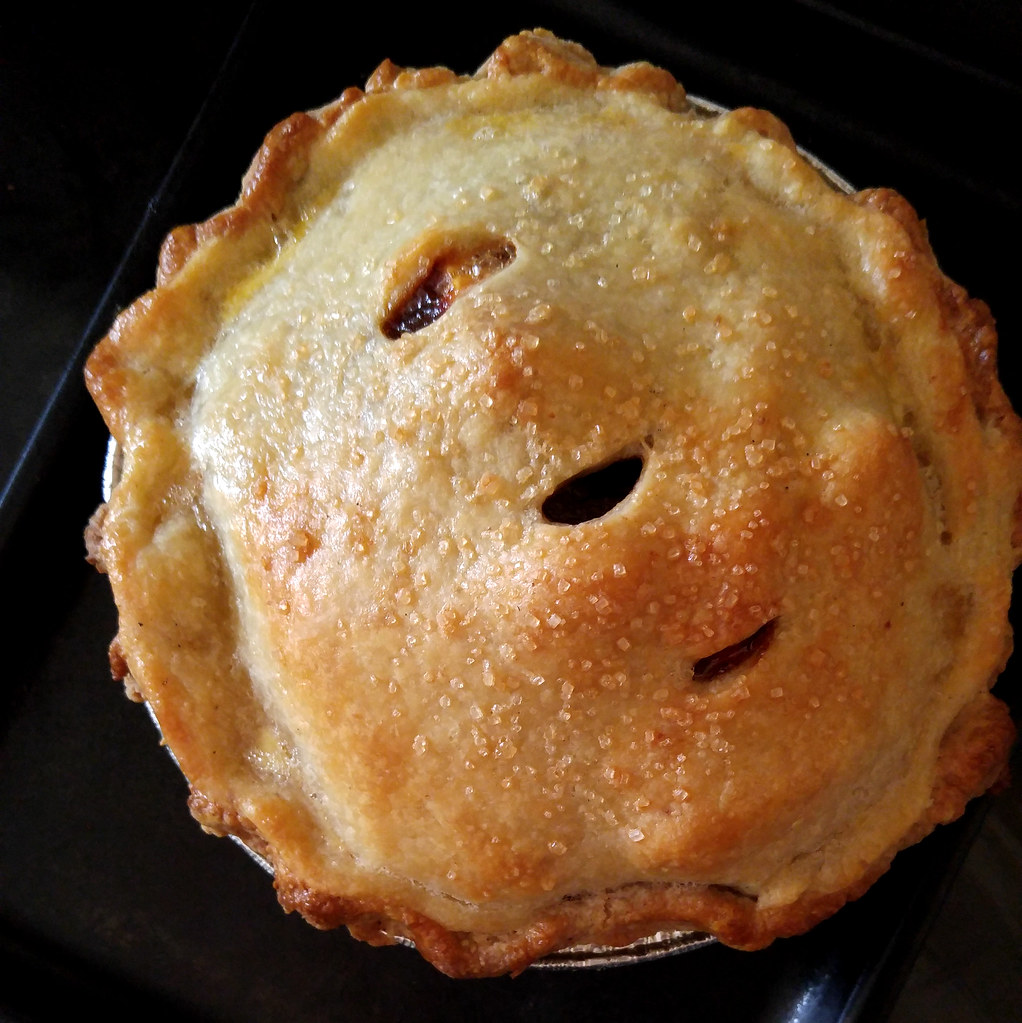As someone who doesn't eat meat (except seafood and fish), it's surprising to most people (including myself) that I'm no stranger to cooking with animal fat. I take great pride in rendering my own tallow and schmaltz from mostly local animals after the meat is used for dinner. The fat makes some amazing savoury dishes to be sure, but also lends that "old fashioned" flavour to the sweet kitchen. I don't normally go out of my way to purchase these fats pre-rendered, but when I was given a bag of suet from someone who didn't realize it was animal fat (I know...) I started searching up ways to use it. I found a lot of traditional Christmas puddings - which nobody here likes - but I started thinking pastry. After all, suet is essentially the beef form of lard - and the shredded, frozen kind I had in my possession was also covered in flour so the pieces remained distinct. Distinct fat particles = flaky pastry. Lightbulb flash.
Having used lard before in pie crusts (and loving the tender, flaky result), it wasn't a far leap to make. However, I didn't have any recipes using suet per se, and certainly none using it in this fine, flour-coated format. Thankfully, the UK and Australia seem to utilize this ingredient more than we do in Canada, and I finally found a recipe that promised a puffy, flaky and tender crust. Originally, the recipe was intended for savoury pot pies, and I can see why, as the dough is somewhat more elastic than straight butter dough and if rolled decently thick it would make a suitable barrier against gravy. However, this elasticity worried me a bit - pastry is not supposed to act like bread dough, it's supposed to be delicate and finicky, right? Well I discovered that in this case, a touch of elasticity in the dough did not hamper the tenderness or flakiness of the baked product at all, and made rolling out bases and top crusts so much easier. If animal products are on your dietary "do" list, I strongly suggest trying suet for custard or berry pies with a lot of liquid.
For me, the best part was actually price. While I got my bag of suet (enough for three single crust pies) for free, I found it at my local grocery for $1. After Thanksgiving, they were marked down to 69 cents. If you bake a lot of pies during the holidays, stocking up on this stuff makes sense - keep it in the freezer up to 6 months no problem!
Flaky Suet Pastry
Adapted from Best Recipes
Makes 3 (10") single crusts
625 g flour
13 g baking powder
2 tbsp sugar (for sweet dough)
Pinch of salt
375 g shredded beef suet (I used Maple Leaf)*
300 mL cold water
- Whisk together the flour, baking powder, sugar and salt into a large mixing bowl. Add the shredded suet and thoroughly mix together.
- Add water gradually into the mixture while stirring with a fork or your hands until a soft, shaggy dough forms (almost like biscuit dough).
- Divide in 3, wrap in plastic and chill at least 1 hour.
*Shredded beef suet can be found in the freezer section of many grocery stores
Calories: 1,821.6
Total Fat: 112.7 g
Cholesterol: 0.0 mg
Sodium: 4.2 mg
Total Carbs: 172.1 g
Dietary Fiber: 5.0 g
Protein: 25.0 g
Apple Butter Apple Pie:
I used about 1/3 of the pie dough for the crust (bottom and top) in this 5" deep dish pie. Peel and dice 2 large or 3 medium tart cooking apples (my favourite is Northern Spy but you can use Mutsu, even Granny Smith) and toss with 1/3 cup sweetened apple butter. Pour into the crust, top and vent. Sprinkle with coarse sugar if desired and bake at 400F for 15 minutes, then drop the heat to 350F and bake 30 minutes. Cool completely before slicing.
Happy Thanksgiving to all my fellow food blogging friends in the US!




Thank you for this recipe.
ReplyDeleteFollowed this recipe to the letter, when baked, the crust was rock hard and completely inedible.
ReplyDeleteI'm sorry to hear that! A rock-hard pastry is usually a sign of overworking the dough, or too much water which activates the gluten. A light touch (your dough should be almost impossible to work with) that leaves visible streaks of suet is key. In addition, you can use a mix of water and vodka, as the vodka does not activate the gluten.
DeleteIt may also be an issue with the type of suet you used and if there are any fillers.
I appreciate the feedback on this!